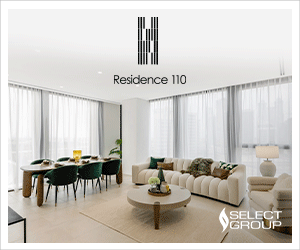2017-2018 was a tumultuous period for UAE’s real estate market, but things seem to have stabilized. On the whole, Dubai’s real estate market is back on the upswing, according to news sources. As Dubai becomes more connected and invites foreign investment, its property market should benefit. Global property prices increased on average by 2.1 per cent in 2017, up from 1.6 per cent the previous year, according to Knight Frank’s Prime International Residential Index. In Dubai especially, prices softened by 5 per cent over the same period, although the picture is brighter than this statistic suggests. Here are some of the top news stories and updates from the nation’s property business business.
Luxury Living is on the rise

Off-plan purchases are dipping, and that’s a good sign. More and more people are opting to purchase properties that are ready, which means that there is more cash in the market. The prices of high-end freehold communities have ceased fluctuating, and property prices are rising in general.
Popular luxury living areas are recording price growths, such as 1.2% at the Palm Jumeirah over 12 months, and 2.6% at The Lakes. The Palm is seeing a steady trickle of high-end transactions, which local developments raking in investors. Some of the more popular ones are Palme Couture and The Alef Residences.
Even Downtown Dubai seems to be doing relatively well, with the the latest year-on-year decline pegged at 5.2%, down from the 9.8% drop over 12 months.
Rents continue to dip in Abu Dhabi

Abu Dhabi once had some of the highest rents in the world, but things seem to have changed for the capital. A combination of increased supply and a faltering sales market have made market conditions rather tough. Investors in the city are being more cautious and are waiting it out for the ‘right’ property.
The apartment sales market softened across the board. Saadiyat Island witnessed the steepest decline with a 6% drop, with prices falling from AED 1,497 per square foot in the first quarter to AED 1,412 per square foot in the second quarter. Al Ghadeer and Reem Island fell by 4% and 3%, respectively, with prices in Al Ghadeer averaging AED 923 per square foot and on Reem Island at AED 1,114 per square foot in the second quarter. Al Raha Beach and Al Reef witnessed the strongest return with just a one per cent decline now selling at AED 1,504 per square foot and AED 910 per square foot, respectively.
The villa sales market witnessed a more marked decrease with Al Ghadeer dropping 7% quarter-on-quarter to AED 809 per square foot and Al Raha Beach Area prices falling 6% to AED 1,081 per square foot. Al Reef and Al Raha Gardens fared slightly better with decreases of 2% and four per cent at AED 692 per square foot and AED 768 per square foot, respectively. Khalifa City was the only area where prices remained unchanged at AED 895 per square foot.
The silver lining is that there are plans by the Abu Dhabi Government to accelerate the economy with a AED 50 billion stimulus package over the next three years.
Time to invest in Sharjah?

Property prices continue to fall in Sharjah, offering potential buyers and even renters plenty of opportunities. It’s a great time to invest in the emirate and to diversify one’s investment portfolio, according to experts. While Sharjah is well known for affordable housing, this past year has seen declines that range between 1% and 10%. But the largest decline was seen in Al Nahda (which borders Dubai). An average 1-bedroom apartment slid by 16.2 %, while an average 2-bedroom apartment fell by 14.3%. This information, coupled with the changes to property laws announced in April, makes for exciting times up ahead.
For more information about buying and renting properties in the UAE, visit https://www.zoomproperty.com/



 Join Our Newsletter
Join Our Newsletter